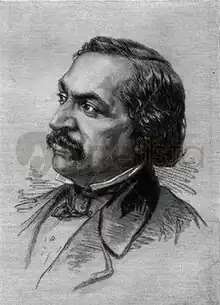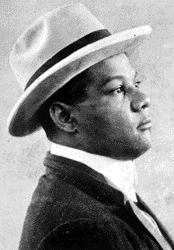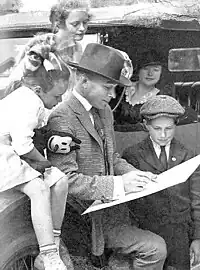 | |
    | |
| Total population | |
|---|---|
| Indeterminable | |
| Regions with significant populations | |
| Languages | |
| English, French, Spanish and Louisiana Creole (Kouri-Vini) | |
| Religion | |
| Predominantly Roman Catholic, Protestant; some practice Voodoo | |
| Related ethnic groups | |
| Cajuns, Louisiana Creole people, Isleños, Alabama Creole people, Québécois African Americans
Peoples in Louisiana Métis Acadians French Americans French-Canadian Americans Cajuns Native Americans Caribbean Americans Spanish Americans Portuguese Americans Afro Latino Cuban Americans Dominican Americans Stateside Puerto Ricans Canarian Americans Mexican Americans Italian Americans German Americans Irish Americans |
| Part of a series on |
| African Americans |
|---|
|
The Creoles of color are a historic ethnic group of Louisiana Creoles that developed in the former French and Spanish colonies of Louisiana (especially in New Orleans), Mississippi, Alabama, and Northwestern Florida, in what is now the United States. French colonists in Louisiana first used the term "Creole" to refer to people born in the colony, rather than in France.
The term Créole was originally used by French Creoles to distinguish people born in Louisiana from those born elsewhere, thus drawing a distinction between Old-World Europeans and Africans from their Creole descendants born in the New World.[2][3] Today, many of these Creoles of color have assimilated into Black culture, while some chose to remain a separate yet inclusive subsection of the African American ethnic group.[4]
Historical Context

Créole is derived from Latin and means to "create", and was first used in the "New World" by the Portuguese to describe local goods and products, but was later used by the Spanish during colonial occupation to mean any native inhabitant of the New World.[5] The term Créole was first used by French colonists to distinguish themselves from foreign-born settlers, and later as distinct from Anglo-American settlers. Créole referred to people born in Louisiana whose ancestors were not born in the territory. Colonial documents show that the term Créole was used variously at different times to refer to white people, mixed-race people, and black people, both free-born and enslaved.[6] The "of color" is considered a necessary qualifier, as "Creole"(Créole) did not convey any racial connotation.
During French colonization, social order was divided into three distinct categories: Creole aristocrats (grands habitants); a prosperous, educated group of multi-racial Creoles of European, African and Native American descent (bourgeoisie); and the far larger class of African slaves and Creole peasants (petits habitants). French Law regulated interracial conduct within the colony. An example of such laws are the Louisiana Code Noir.[7] Though interracial relations were legally forbidden, or heavily restricted, they were not uncommon. Mixed-race Creoles of color became identified as a distinct ethnic group, Gens de couleur libres (free persons of color), and were granted their free-person status by the Louisiana Supreme Court in 1810.[8] Some have suggested certain social markers of creole identity as being of Catholic faith, having a strong work ethic, being a fan of literature, and being fluent in French-- standard French, Creole and Cajun are all considered acceptable versions of the French language.[9] For many, being a descendant of the Gens de couleur libres is an identity marker specific to Creoles of color.[9]
Many Creoles of color were free-born, and their descendants often enjoyed many of the same privileges that whites did, including (but not limited to) property ownership, formal education, and service in the militia. During the antebellum period, their society was structured along class lines and they tended to marry within their group. While it was not illegal, it was a social taboo for Creoles of color to marry slaves and it was a rare occurrence. Some of the wealthier and prosperous Creoles of color owned slaves themselves. Other Creoles of color, such as Thomy Lafon, used their social position to support the abolitionist cause.
Another Creole of color, wealthy planter Francis E. Dumas, emancipated all of his slaves in 1863 and organized them into a company in the Second Regiment of the Louisiana Native Guards, in which he served as an officer.[10]
Migration
First Wave
The first wave of creole migration occurred between 1840 and 1890 with the majority of migrants fleeing to ethnic-dominant outskirts of larger U.S. cities and abroad where race was more fluid.[11]
Second Wave
The reclassification of Creoles of color as black prompted the second migratory wave of Creoles of color between 1920 and 1940.[12]
Military
Creoles of color had been members of the militia for decades under both French and Spanish control of the colony of Louisiana. For example, around 80 free Creoles of color were recruited into the militia that participated in the Battle of Baton Rouge in 1779.[13]
After the United States made the Louisiana Purchase in 1803 and acquired the large territory west of the Mississippi, the Creoles of color in New Orleans volunteered their services and pledged their loyalty to their new country. They also took an oath of loyalty to William C. C. Claiborne, the Louisiana Territorial Governor appointed by President Thomas Jefferson.[14]
Months after the colony became part of the United States, Claiborne's administration was faced with a dilemma previously unknown in the U.S.; integration in the military by incorporating entire units of previously established "colored" militia.[15] In a February 20, 1804, letter, Secretary of War Henry Dearborn wrote to Claiborne saying, "…it would be prudent not to increase the Corps, but to diminish, if it could be done without giving offense…" [16] A decade later, the militia of color that remained volunteered to take up arms when the British began landing troops on American soil outside of New Orleans in December 1814. This was the commencement of the Battle of New Orleans.[17]
After the Louisiana Purchase, many Creoles of color lost their favorable social status, despite their service to the militia and their social status prior to the U.S. takeover. The territory and New Orleans became the destination of many migrants from the United States, as well as new immigrants. Migrants from the South imposed their caste system. In this new caste system, all people with African ancestry or visible African features were classified as black, and therefore categorized as second-class citizens, regardless of their education, property ownership, or previous status in French society. Former free Creoles of color were relegated to the ranks of emancipated slaves.

A notable Creole family was that of Andrea Dimitry. Dimitry was a Greek immigrant who married Marianne Céleste Dragon, a woman of African and Greek ancestry, around 1799. Their son, Creole author and educator Alexander Dimitry, was the first person of color to represent the United States as Ambassador to Costa Rica and Nicaragua. He was also the first superintendent of schools in Louisiana. Andrea Dimitry's children were upper-class elite Creole. They were mostly educated at Georgetown University. One of his daughters married into the English royal House of Stuart. Some of the Creole children were prominent members of the Confederate Government during the American Civil War.[18][19][20]
Activism
With the advantage of having been better educated than the new freedmen, many Creoles of color were active in the struggle for civil rights and served in political office during Reconstruction, helping to bring freedmen into the political system.[21][22] During late Reconstruction, white Democrats regained political control of state legislatures across the former Confederate states by intimidation of blacks and other Republicans at the polls. Through the late nineteenth century, they worked to impose white supremacy under Jim Crow laws and customs. They disfranchised the majority of blacks, especially by creating barriers to voter registration through devices such as poll taxes, literacy tests, grandfather clauses, etc., stripping African Americans, including Creoles of color, of political power.
Creoles of color were among the African Americans who were limited when the U.S. Supreme Court ruled in the case of Plessy v. Ferguson in 1896, deciding that "separate but equal" accommodations were constitutional. It permitted states to impose Jim Crow rules on federal railways and later interstate buses.
On June 14, 2013, Louisiana Governor Bobby Jindal signed into law Act 276, creating the "prestige" license plate stating "I'm Creole", in honor of the Creoles' contributions, culture, and heritage.[23]
Education
It was common for wealthy francophone Gens de couleur to study in Europe, with some opting to not return due to greater liberties in France.[24] When neither educated abroad or in whites-only schools in the United States by virtue of passing, Creoles of color were often homeschooled or enrolled in private schools.[25] These private schools were often financed and staffed by affluent Creoles of color.[26] For example, L'Institute Catholique was financed by Madame Marie Couvent with writers Armand Lanusse and Jonnai Questy serving as educators.[24]
In 1850 it was determined that 80% of all Gens de couleur libres were literate; a figure significantly higher than the white population of Louisiana at the time.[24]
Contribution to the arts
Literature
During the antebellum period, well-educated francophone gens de couleur libres contributed extensively to literary collections, such as Les Cenelles, with a significant portion of these works dedicated to describing the conditions of their enslaved compatriots.[24] One example of such texts is Le Mulatre (The Mulatto) by Victor Séjour, a Creole of color. Other themes approached aspects of love, religion and many texts were likened to French romanticism.[24] In daily newspapers locally and abroad, pieces written by Creoles of color were prominent.[11] Even during the ban on racial commentary during the antebellum period, pieces written by these creoles reformulated existing french themes to subtly critique race relations in Louisiana, while still gaining in popularity among all readers.[11]
Music

Some Creoles of color trained as classical musicians in 19th-century Louisiana. These musicians would often study with those associated with the French Opera House; some traveled to Paris to complete their studies. Creole composers of that time are discussed in Music and Some Highly Musical People by James Monroe Trotter, and Nos Hommes et Notre Histoire by Rodolphe Lucien Desdunes.
Notable classical Creole musicians
- Basile Barès
- Edmund Dédé
- Laurent Dubuclet
- Louis Moreau Gottschalk
- Lucien-Léon Guillaume Lambert
- Charles Lucien Lambert
- Sidney Lambert
- Victor-Eugene McCarty
- Samuel Snaër
Jazz musicians

Creoles of color from the New Orleans area were active in defining the earliest days of jazz.[27][28] Some of the most notable names:
- Vernel Fournier
- George Baquet
- Paul Barbarin
- Louis Barbarin
- Danny Barker
- Emile Barnes
- Paul Barnes
- Sidney Bechet
- Barney Bigard
- Louis Cottrell, Sr.
- Louis Cottrell, Jr.
- Joe Darensbourg
- Louis Nelson Delisle
- Cie Frazier
- Illinois Jacquet
- Freddie Keppard
- Lawrence Marrero
- Jelly Roll Morton (Ferdinand J. LaMothe)
- Albert Nicholas
- Kid Ory
- Manuel Perez
- Jimmy Palao
- Alcide Pavageau
- Alphonse Picou
- De De Pierce
- Armand J. Piron
- John Robichaux
- Omer Simeon
- Lorenzo Tio
- Eddie Bo
See also
References
- ↑
- smaller populations in Cuba, Haiti and Dominican Republic, Puerto Rico, Mexico,
- ↑ Kathe Managan, The Term "Creole" in Louisiana : An Introduction Archived December 4, 2013, at the Wayback Machine, lameca.org. Retrieved December 5, 2013
- ↑ Bernard, Shane K, "Creoles" Archived June 12, 2011, at the Wayback Machine, "KnowLA Encyclopedia of Louisiana". Retrieved October 19, 2011
- ↑ Steptoe, Tyina (2015-12-15). "When Louisiana Creoles Arrived in Texas, Were They Black or White". Zócalo Public Square. Retrieved 2021-03-21.
- ↑ "The Creole Community in The United States of America, a story". African American Registry. Retrieved 2021-12-06.
- ↑ Kein, Sybil. Creole: The History and Legacy of Louisiana's Free People of Color. Louisiana State University Press, 2009, p. 73. ISBN 9780807126011.
- ↑ "(1724) Louisiana's Code Noir". BlackPast. 2007-07-28. Retrieved 2021-11-26.
- ↑ Dubois, Sylvie; Melançon, Megan (2000). "Creole Is, Creole Ain't: Diachronic and Synchronic Attitudes toward Creole Identity in Southern Louisiana". Language in Society. 29 (2): 237–258. doi:10.1017/S0047404500002037. ISSN 0047-4045. JSTOR 4169003. S2CID 144287855.
- 1 2 Dormon, James H. (1992). "Louisiana's "Creoles of Color": Ethnicity, Marginality, and Identity". Social Science Quarterly. 73 (3): 615–626. ISSN 0038-4941. JSTOR 42863083.
- ↑ Shirley Elizabeth Thompson, Exiles at Home: The Struggle to Become American in Creole New Orleans, Harvard University Press, 2009, pg. 162. ISBN 9780674023512.
- 1 2 3 Brosman, Catharine Savage (2013-10-01), "Poetry by Mid-Nineteenth-Century Free People of Color", Louisiana Creole Literature, University Press of Mississippi, pp. 80–92, doi:10.14325/mississippi/9781617039102.003.0007, ISBN 9781617039102, retrieved 2021-12-13
- ↑ Jolivétte, Andrew (2005-01-01). "Migratory Movement: The Politics of Ethnic Community (Re) Construction Among Creoles of Color, 1920-1940". Ethnic Studies Review. 28 (2): 37–60. doi:10.1525/esr.2005.28.2.37. ISSN 1555-1881. S2CID 134077616.
- ↑ Charles Gayarré, History of Louisiana: The Spanish Domination, William J. Widdleton, 1867, pp 126-132. [ISBN unspecified].
- ↑ Carter, Clarence (1940). The Territorial Papers of the United States, Vol. IX, The Territory of Orleans. p. 174. [ISBN unspecified].
- ↑ Eaton, Fernin. "1811 Slave Uprising, etc". Salon Publique, Pitot House, November 7, 2011. Retrieved June 7, 2013.
- ↑ Rowland, Dunbar (1917). Official Letter Books of W.C.C. Claiborne, 1801-1816. Mississippi Dept. of Archives & History. pp. Vol II, p. 54–55. [ISBN unspecified].
- ↑ Eaton, Fernin. "1811 Slave Uprising-Governor on Trial: Claiborne in His Own Words". Salon Publique, Pitot House, November 7, 2011, Pp. 11-13. academia.edu. Retrieved June 7, 2013.
- ↑ "Louise Pecquet du Bellet" Some Prominent Virginia Families Vol. 4 Lynchburg, VA: J.P. Bell Company Inc. 1907: p. 188
- ↑ Kendall, John Smith (1922). History of New Orleans Volume 3. Chicago And New York: The Lewis Publishing Company. p. 1104.
- ↑ Steve Frangos (June 12, 2018). "First Greek Couple of North America: Andrea Dimitry and Marianne Celeste Dragon". Ethinkos Kirikas The National Herald. Archived from the original on October 22, 2021. Retrieved April 17, 2021.
- ↑ Kathe Managan, The Creole Community and the Struggle for Civil Rights Archived 2014-11-06 at the Wayback Machine, lameca.org, Accessed November 22, 2013.
- ↑ Adam Fairclough, Race & Democracy: The Civil Rights Struggle in Louisiana, 1915-1972, University of Georgia Press, 2008, pp. 1-21
- ↑ "HB147". Archived from the original on 2021-04-11. Retrieved 2013-06-18.
- 1 2 3 4 5 "Afro-creole literature from 19th Century Louisiana". french.centenary.edu. Retrieved 2021-12-06.
- ↑ "EDUCATION OF FREEDMEN.: COLORED SCHOOLS IN NEW ORLEANS". Massachusetts Teacher and Journal of Home and School Education. 18 (5): 168. May 1865. ProQuest 136905107.
- ↑ Ochs, Stephen J. (2000). A Black patriot and a white priest : André Cailloux and Claude Paschal Maistre in Civil War New Orleans. Baton Rouge: Louisiana State University Press. ISBN 978-0-8071-2531-1. OCLC 42772101.
- ↑ Charles B. Hersch, Subversive Sounds: Race and the Birth of Jazz in New Orleans, University of Chicago Press, 2007, pg. 98-109. ISBN 9780226328690.
- ↑ Scott DeVeaux, Gary Giddins, Jazz, wwnorton.com, Accessed November 22, 2013
Further reading
- Bruce, Clint, ed. and trans. (2020). Afro-Creole Poetry in French from Louisiana's Radical Civil War–Era Newspapers: A Bilingual Edition. Historic New Orleans Collection. ISBN 9780917860799.
{{cite book}}: CS1 maint: multiple names: authors list (link) - Douglas, Nick (2013). Finding Octave: The Untold Story of Two Creole Families and Slavery in Louisiana. CreateSpace Independent Publishing Platform. ISBN 9781493522088.
- Jacques Anderson, Beverly (2011). Cherished Memories: Snapshots of Life and Lessons from a 1950s New Orleans Creole Village. iUniverse.com. ISBN 9781462003198.
- Malveaux, Vivian (2009). Living Creole and Speaking It Fluently. AuthorHouse. ISBN 9781467846486.
- Kein, Sybil (2009). Creole: the history and legacy of Louisiana's free people of color. Louisiana State University Press. ISBN 9780807126011.
- Jolivette, Andrew (2007). Louisiana Creoles: Cultural Recovery and Mixed-Race Native American Identity. Lexington Books. ISBN 9780739118962.
- Martin, Munro; Britton, Celia (2012). American Creoles: The Francophone Caribbean and the American South. Liverpool University Press. ISBN 9781846317538.
- Gehman, Mary (2009). The Free People of Color of New Orleans: An Introduction. Margaret Media, Inc. ISBN 9781508483670.
- Clark, Emily (2013). The Strange History of the American Quadroon: Free Women of Color in the Revolutionary Atlantic World. The University of North Carolina Press. ISBN 9781469607528.
- Dominguez, Virginia (1986). White by Definition: Social Classification in Creole Louisiana. Rutgers University Press. ISBN 9780813511092.
- Cossé Bell, Caryn (2004). Revolution, Romanticism, and the Afro-Creole Protest Tradition in Louisiana 1718-1868. Louisiana State University Press. ISBN 9780807141526.
- Anthony, Arthe A. (2012). Picturing Black New Orleans: A Creole Photographer's View of the Early Twentieth Century. University Press of Florida. ISBN 9780813041872.
External links
- Henry, LaFleur, and Simien (July 2015). "In their words: We are all Creole", DailyWorld.com.
- History Detectives, S7E2: "'Creole Poems'", PBS.org.
- C.R.E.O.L.E. Inc. ("An organization dedicated to preserving the Creole Heritage.")
- ZydecoNation.org (documentary)
- Nightline (December ): "Test Suggests 'Black' Man Is Really Not", ABCNews.Go.com.
- Le Melle, Stacy Parker (2013). "Quadroons for Beginners: Discussing the Suppressed and Sexualized History of Free Women of Color with Author Emily Clark", HuffingtonPost.com.
- Duggar, Nikki (2009). "I Am What I Say I Am: Racial and Cultural Identity among Creoles of Color in New Orleans", ScholarWorks.UNO.edu. (PDF)
- Landry, Christophe (2015). "A Creole Melting Pot: the Politics of Language, Race, and Identity in southwest Louisiana, 1918-45", Academia.edu.
- Landry, Christophe (2016). "Beyoncé and Solange Knowles breaking boundaries", MyLHCV.com.
- Rosenberg, Jeremy (2012). "Michelle Covington: The Great Migration and Creole Cooking", KCET.org.
- Tervalon, Jervey (2006). "The Creole Connection", LAWeekly.com.
- Flaccus, Gillian (2005). "After Katrina, transplanted Creoles vow to keep culture alive", Legacy.SanDiegoUnionTribune.com.
- Goodrich, Juliette (2013). "Bay Area Grammy Nominee Represents Local Creole Community", SanFrancisco.CBSLocal.com.
- Fuselier, Herman (2016). "Cluse: 'Creole is a lot more than people think'", TheAdvertiser.com.
- "Finding Agnes", BlogSpot.com.